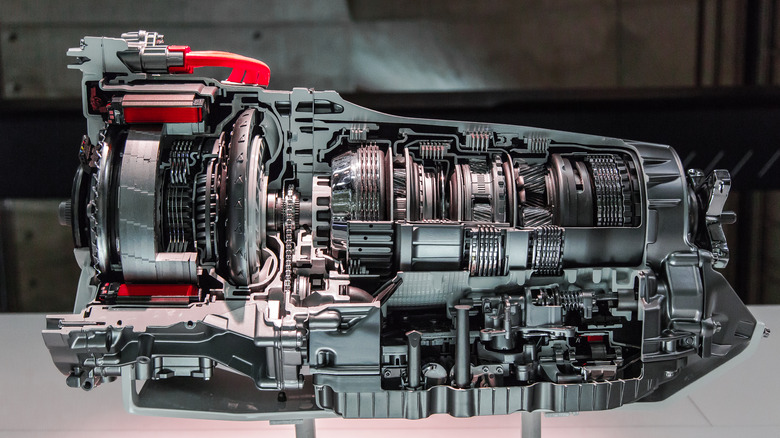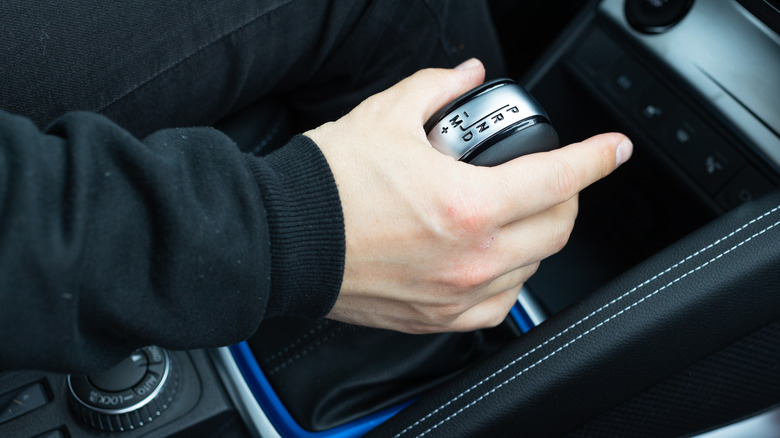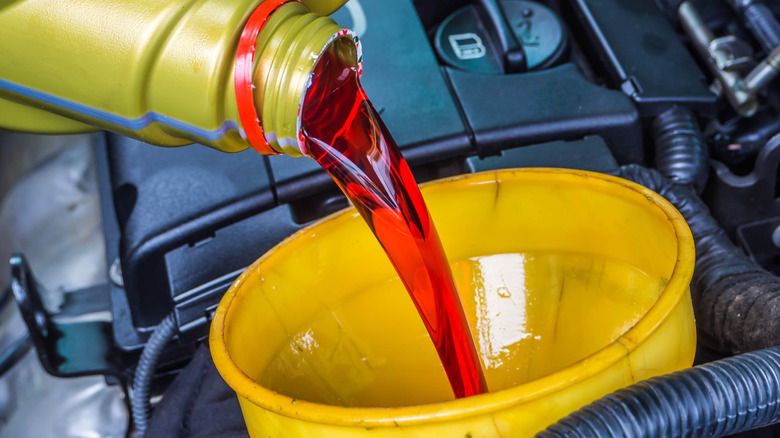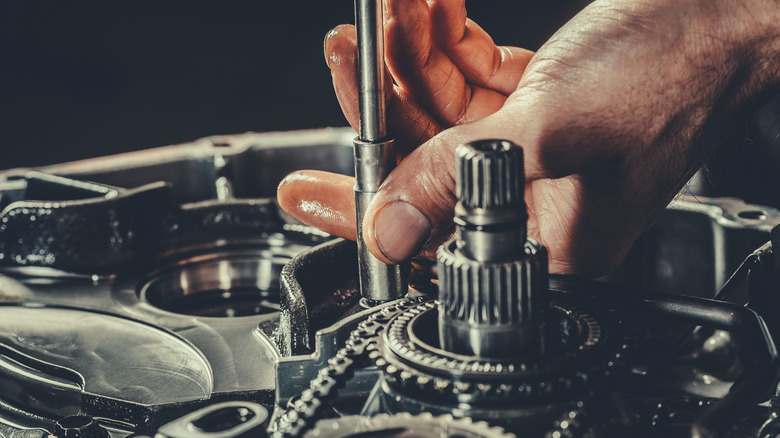
patruflo/Shutterstock
Have you noticed high engine revs, unusual noises, or that your vehicle hesitates when shifting gears? If so, you may be dealing with a slipping transmission.
When you hear someone describe a transmission as «slipping,» they’re generally talking about the transmission failing to effectively transfer the engine’s power to the drive wheel. This can cause your transmission to switch gears unexpectedly, often slipping into neutral without any action on your part. While the transmission is one of the most complex parts of a car, when it begins to slip, you’ll almost always be able to feel it when driving.
A slipping transmission is one of the most common automatic transmission problems, although it can happen in manual transmissions as well. In manual vehicles, slipping is usually caused by a worn-out clutch. Replace the clutch, and you’re good to go. Things get a bit more complicated when dealing with automatic transmissions: The problem could be caused by any number of things, including low transmission fluid levels, degraded fluid quality, or internal wear and tear on the transmission components such as the bands, clutches, or gears.
While a slipping transmission could be a sign your transmission is going bad, that’s not always the case. It might simply need a thorough check-up and possibly some maintenance work, like a fluid change or adjustment, to get back up and running smoothly.
Signs of a slipping transmission

Mariaprovector/Shutterstock
If it’s never happened to you before, or you don’t have a lot of miles under your belt as a driver, you may not understand what’s going on when your transmission begins to slip. That’s why it’s a good idea to become familiar with the signs and symptoms of a slipping transmission. Repairing an automatic transmission isn’t cheap, making it important to catch these issues early to reduce the odds of having to pay costly repairs down the road.
One of the most obvious signs that your transmission is slipping is that your vehicle hesitates when you press the gas pedal. Instead of moving forward smoothly, it takes longer to pick up speed. You may also notice unusual sounds such as whining, buzzing, or even clunking from the transmission when it slips, especially when shifting gears or when the transmission is under load.
Another sign something is wrong is if the engine revs higher than expected for the speed you’re going, or the gear you’re in. When this happens, the engine sounds like it’s working hard, but there’s often a noticeable lack of acceleration. The transmission may also slip in and out of gear without you doing anything. If you notice a burning smell, that’s also a sign you’ll want to pay attention to.
Common causes of transmission slipping

GracePhotos/Shutterstock
If your transmission is slipping, there’s a good chance low transmission fluid and/or a leak is responsible. This fluid plays an essential role in lubricating and cooling the transmission, and when there isn’t enough, the transmission can’t work properly or reliably. Faulty solenoids can also play a role, as solenoids control the flow of transmission fluid. When they fail, you may experience issues like delayed gear shifts, harsh shifts, or even the transmission failing to shift altogether, which often results in slipping.
Dirty, old, or contaminated fluid can also cause your transmission to slip. This happens because the degraded fluid doesn’t supply the hydraulic pressure needed to shift gears smoothly, leading to slipping. Knowing how often to change your transmission fluid can help you avoid this problem. Another possibility is a problem with your torque converter, which transfers the engine’s power to the transmission in automatic cars. When it’s not working correctly, it can cause the transmission to slip.
Worn transmission bands are often a culprit when a transmission starts slipping as well. Transmission bands link the gears in automatic transmission vehicles, and over time, they can become worn or break. When that happens, they’re no longer able to secure the gears properly when shifting. The same thing happens with the gears within the transmission, which can wear down from friction and heavy use. Worn gears may not engage correctly, leading to slipping.
While we usually think of manual transmissions when we talk about the clutch, in automatic transmission vehicles, worn-out clutch plates can also cause slipping, erratic shifts, and other transmission problems. Unfortunately, if it gets to this point, you’ll have to have your transmission rebuilt or replaced to fix the problem.
Solutions and preventive measures

Da-kuk/Getty Images
If you’ve determined that the problems you’re experiencing with your vehicle are caused by a slipping transmission, you need to fix it right away. Simple maintenance like checking and adding transmission fluid is something you can do at home with minimal experience, though make sure to check the owner’s manual for the recommended fluid.
If you have some background in car maintenance, adjusting the linkage or changing the transmission fluid and filter should also be manageable with the right tools and perhaps some extra manpower. However, more complex issues like worn gears, repairing or replacing a faulty solenoid, or rebuilding the transmission, will require professional skills and equipment.
You can do things like regularly checking your transmission fluid level, color, and smell to prevent transmission problems down the line. Choosing a highly-ranked transmission fluid can also help. Also, be sure to follow the vehicle manufacturer’s recommended schedule for changing transmission fluid and filters to prevent dirt and debris from causing damage. While driving, avoid doing things that could cause the transmission to overheat, such as towing heavy loads without a proper transmission cooler or excessive idling.